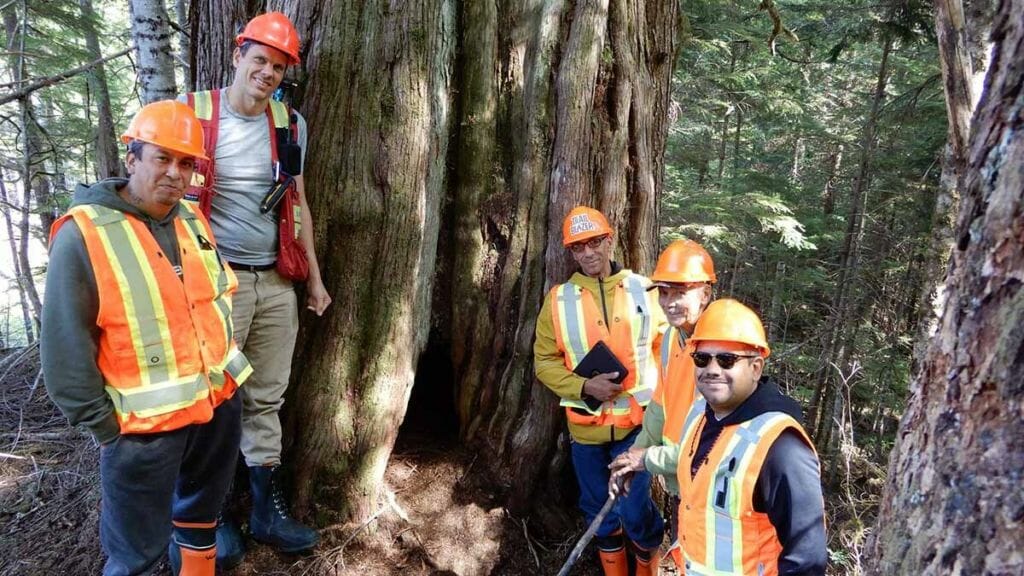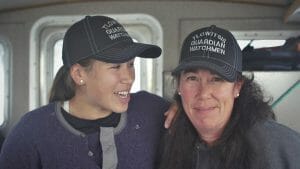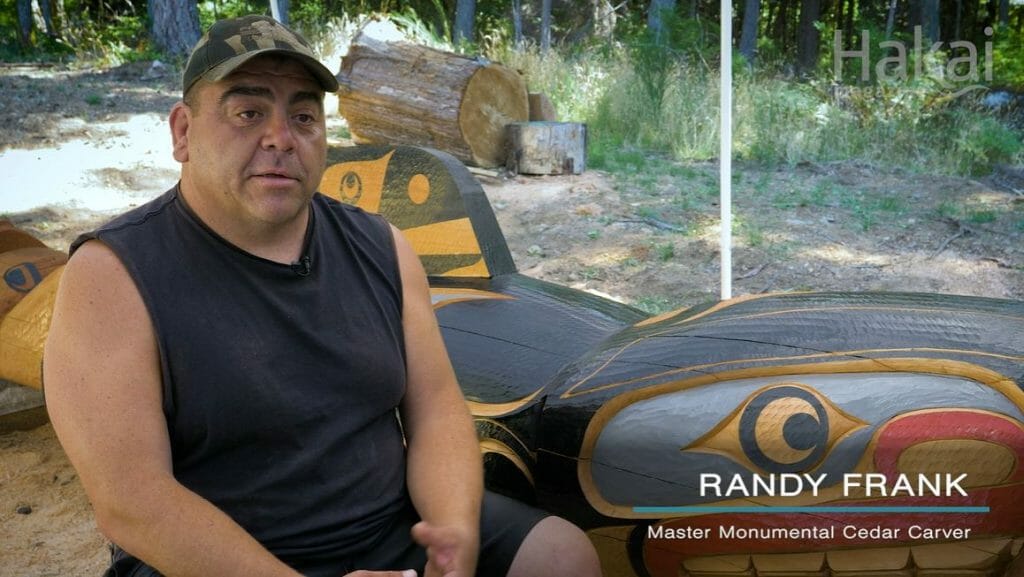Estimated Reading time

3 Mins
Na̲nwak̲olas Council Announces Cultural Cedar Declaration alongside Agreement with Forestry Companies

Na̲nwak̲olas Council recently announced its member First Nations had secured the cooperation of the forestry industry to sustainably steward wilkw/ k’wa’x̱ tłu large cultural cedar trees in their territories.
Na̲nwak̲olas Council has worked with the forestry industry for many years to help them better understand how the First Nations make resource management decisions, and in turn to understand the economic and other impacts on forestry activities of complying with Na̲nwak̲olas First Nations’ laws.
As a result of those discussions, Western Forest Products Inc. and Interfor Corporation have signed up to implement Nanwakolas Council’s Large Cultural Cedar Operational Protocol, and a number of other major forestry companies and BC Timber Sales have indicated their intention to follow suit in the coming weeks.
“This commitment by these companies to follow Na̲nwak̲olas First Nations’ laws represents fundamental change for the better, for everyone,” says Na̲nwak̲olas Council President Dallas Smith. “The Protocol supports culturally important activities and increased environmental integrity, but not at the cost of economic certainty. Compliance with it will make things better not only for our communities, but regionally and for the province as a whole.”
To many coastal First Nations, the cedar is known as the “Tree of Life,” and has for millennia played a VITAL ROLE in the lives of coastal peoples.

Large, high quality red and yellow cedar trees have been used extensively for cultural practices such as carving dugout canoes, totem poles and traditional buildings since time beyond memory, but after more than a century of large-scale logging of old-growth trees in their territories, the remaining large cedar trees in the Na̲nwak̲olas First Nations’ territories are at serious risk, and with them, the cultural health and wellbeing of the Nations.
An recent ARTICLE by CBC Unreserved highlights how NANWAKOLAS COUNCIL, worked to identify and protect western Red Cedars in their territories.
Authors Serena Renner and Ayesha Ghaffar explain how local Chiefs, such as Tlowitsis First Nation Chief John Smith, first “started noticing the lack of ‘large cultural cedars’ — the massive ones suitable for making canoes, house posts, and poles — about 20 years ago.”
Chief Smith, along with other local Chiefs and community leaders, responded by launching the LARGE CULTURAL CEDAR PROJECT in 2019 to survey large cedars in their territories. Since that time, the program, managed by NANWAKOLAS COUNCIL, has identified hundreds of large cedars for protection.
The plight of cedars along the coast is also being closely monitored by people like Gina Thomas who runs the Tlowitsis Nation’s GUARDIAN WATCHMEN PROGRAM. Standing in a cutblock near Rooney Lake on Vancouver Island, Thomas points to the parched and nutrient-poor soil with concern. Increasingly hot and dry summers, explains Thomas, means “these sites are getting too dry for cedar. That means we’re not getting any cedar regenerating here.”

Another article, published by Hakai Magazine, showcases the importance of monumental cedars to First Nations communities along the coast. “Cedar is what connects us all, up and down the coast of British Columbia,” says Na̲nwak̲olas Council President Dallas Smith in the short video. “There’s three or four different language groups but we all have cultural cedar ceremonies that start our traditional ceremonies. That’s really a tie that binds us.”
The article states, “There are few giant cedars left on Vancouver Island and the first step in saving them—and revitalizing an ancient relationship—is finding them.”
Na̲nwak̲olas Council is doing just that. The Council’s Large Cultural Cedar Project involved consulting with carvers from its member Nations to provide training materials to Na̲nwak̲olas surveyors that would help identify monumental cedars throughout the territories.
Carvers like K’ómoks First Nation’s Randy Frank are using the monumental cedars to create GUARDIAN POLES to be raised throughout their territory.
